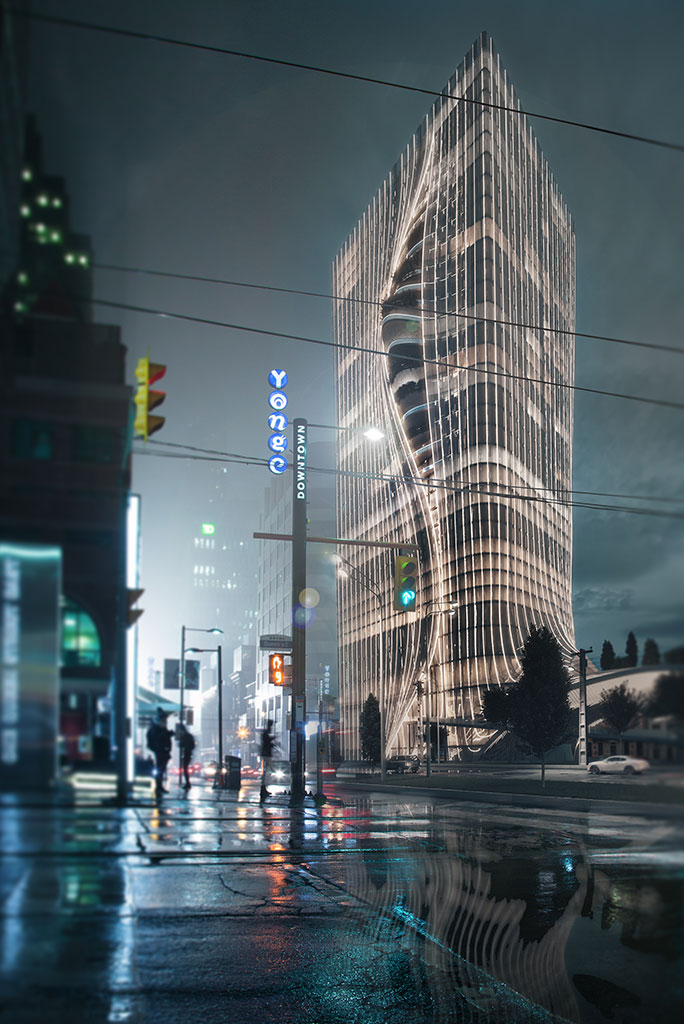
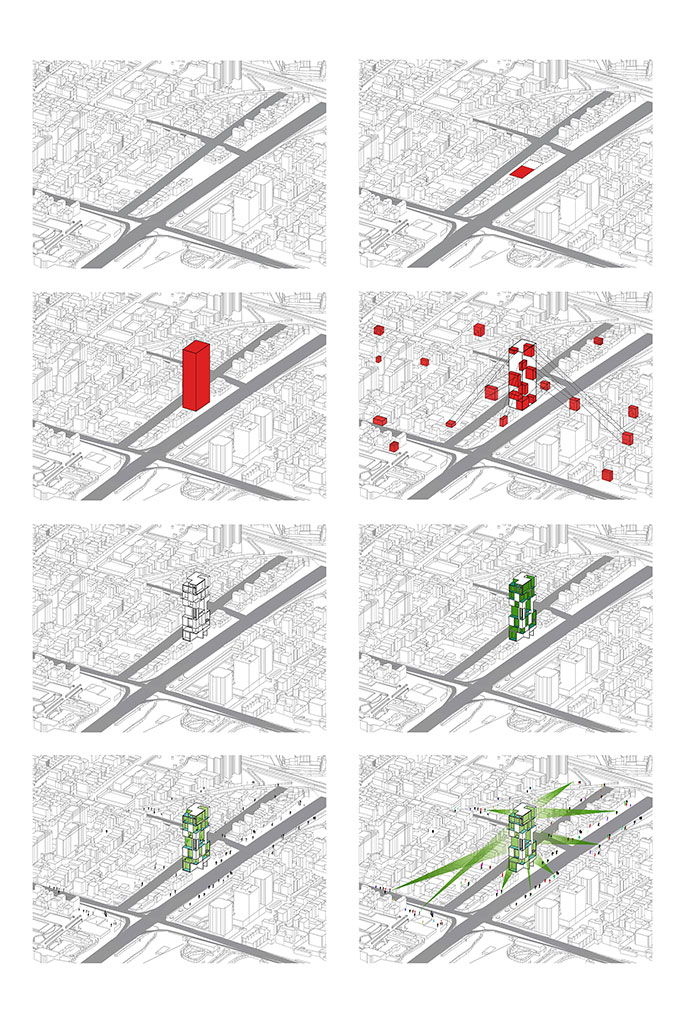
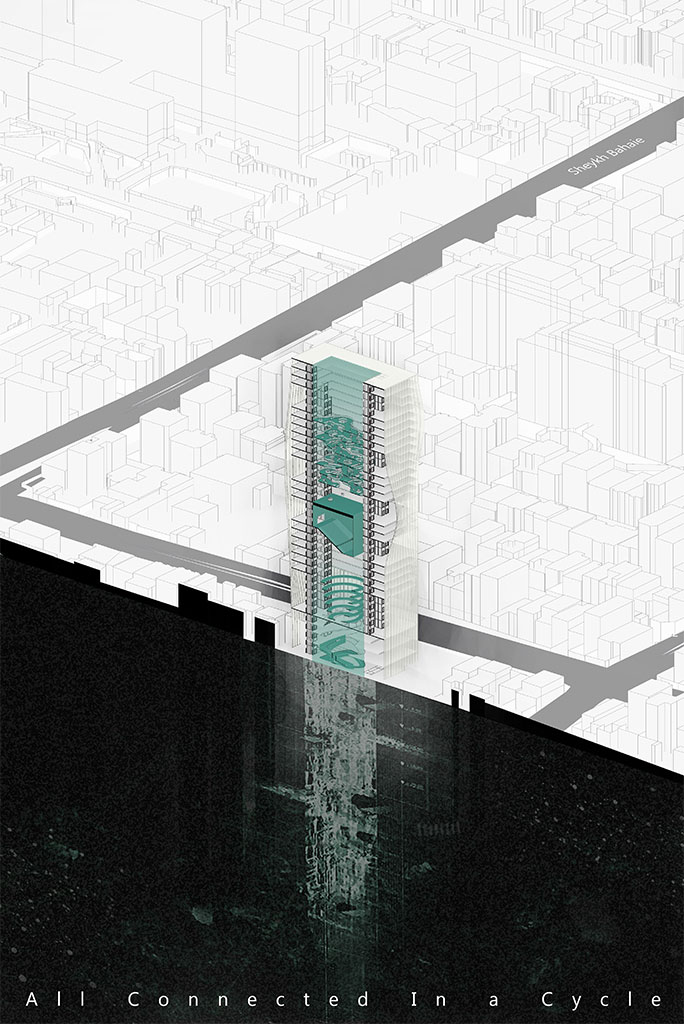
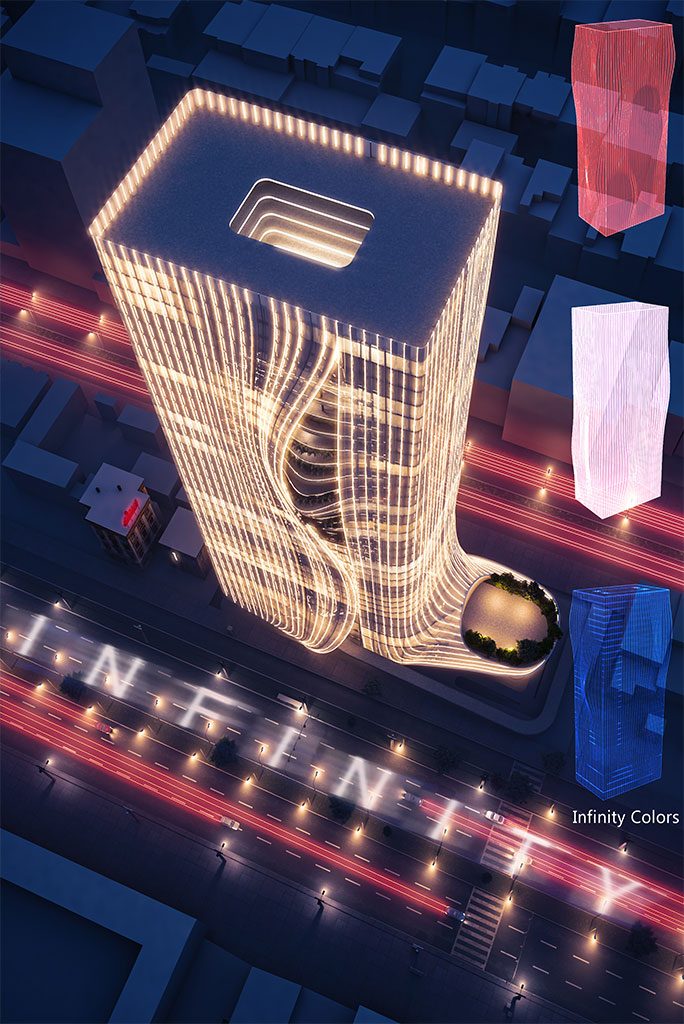
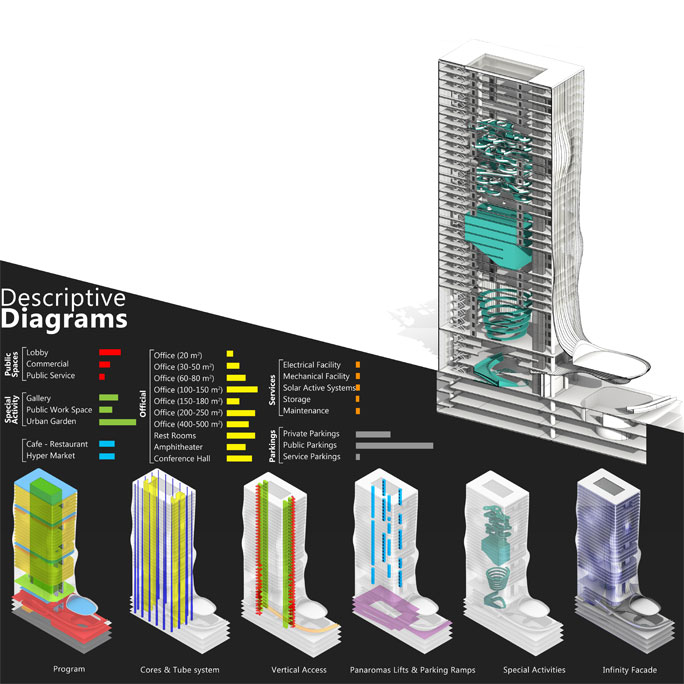

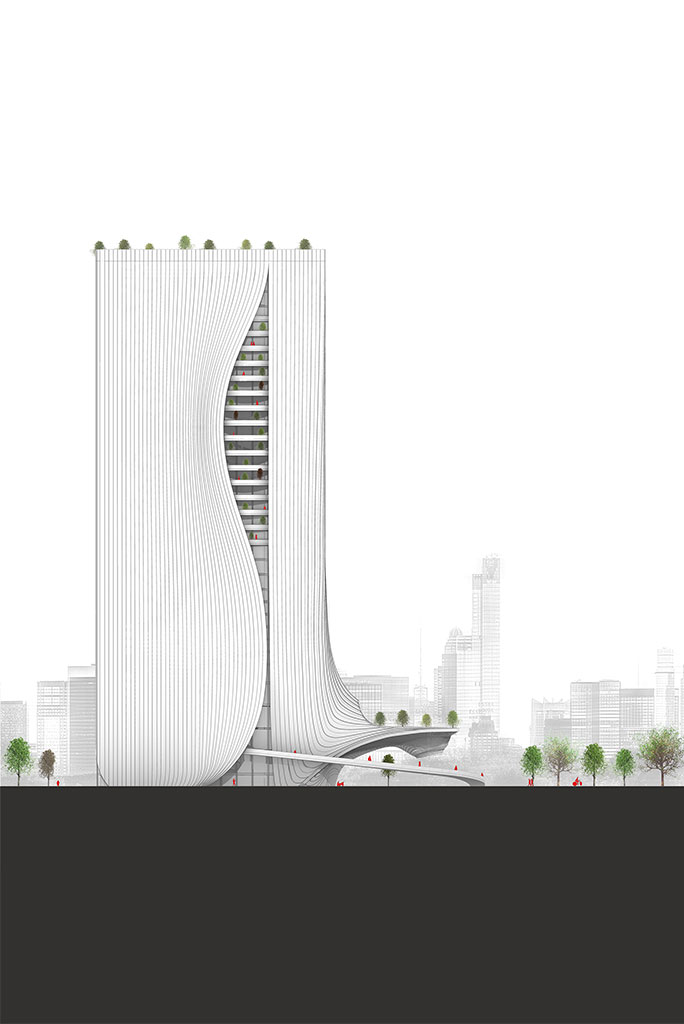
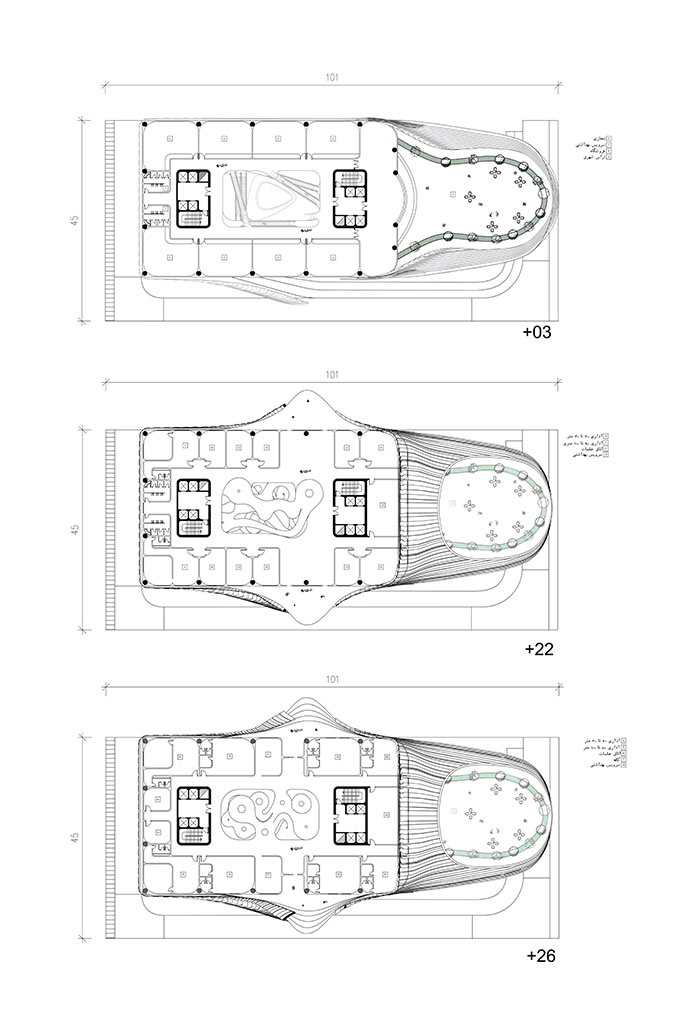
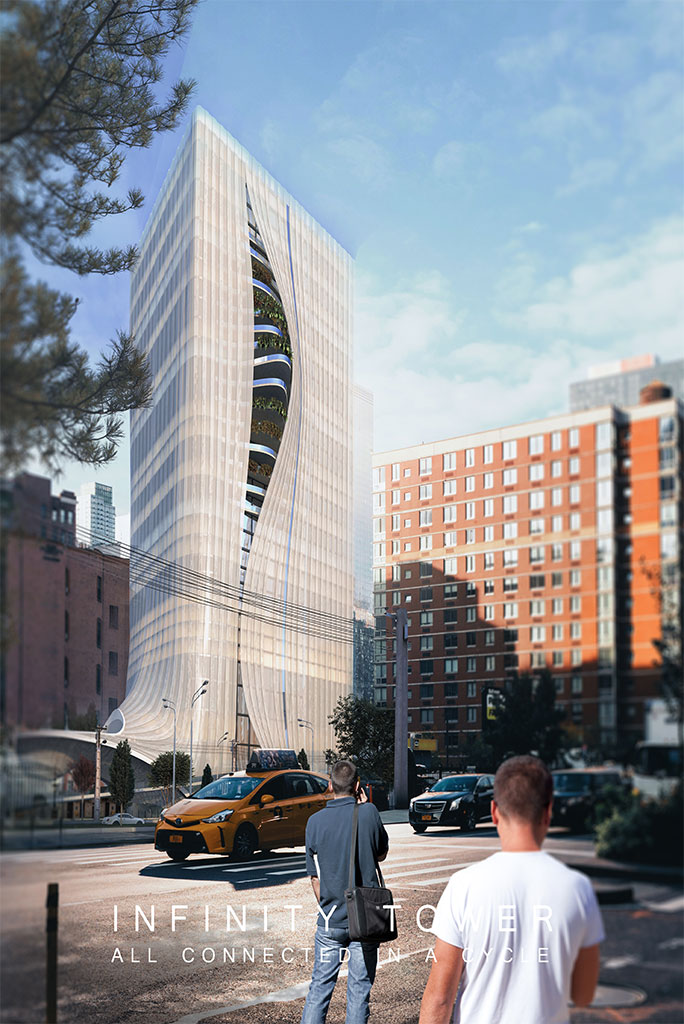
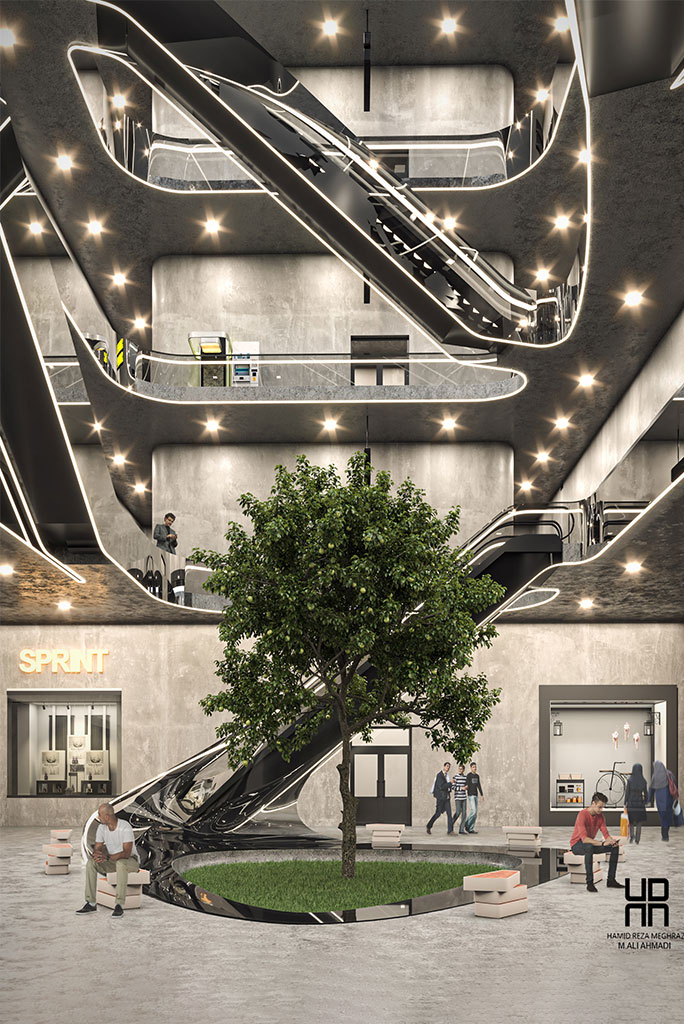

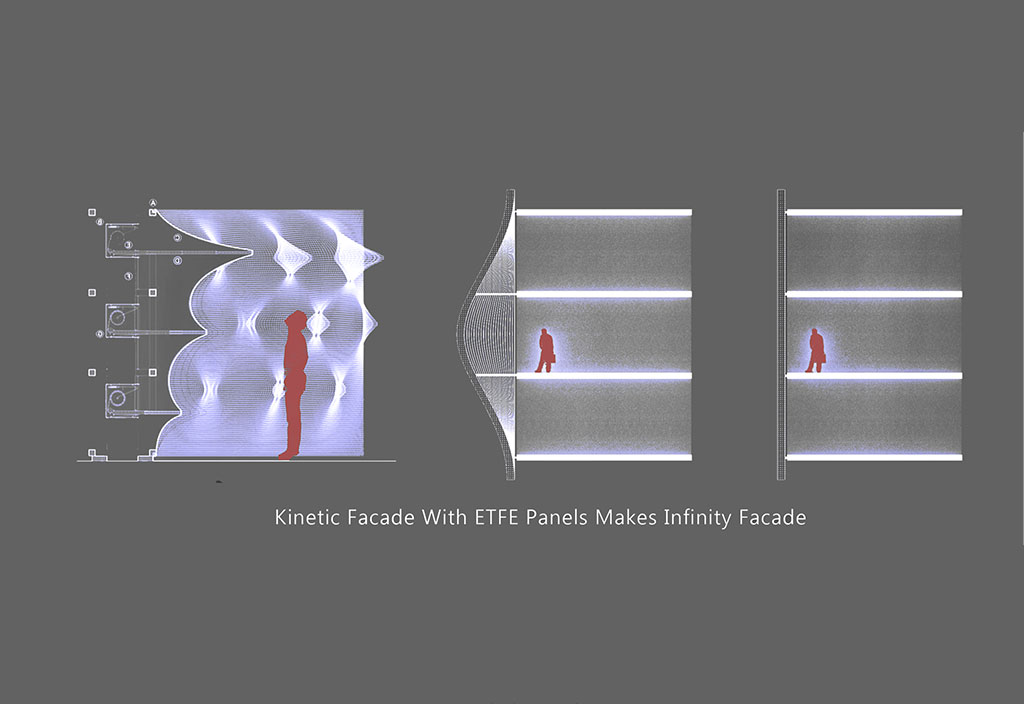
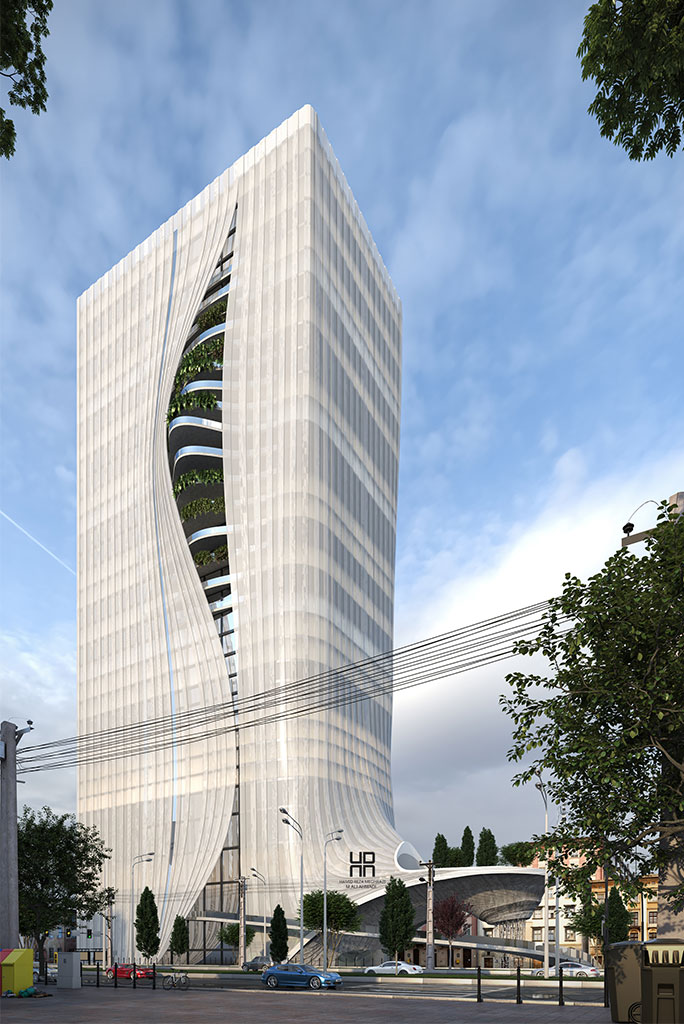













INFINITY TOWER
Upon taking a higher vantage point of the urban area of Tehran, one notices the various scales of constituent parts that constitute the cityscape, comprising both macroscopic and microscopic elements. The cluster of seeds that are closely positioned in adjacency, and encompasses a diverse spectrum of organisms. In the congested confines of these thoroughfares and residences, certain seeds have manifested themselves as the purview of commercial enterprises and organizational establishments, compelled by the dearth of office facilities to adopt an administrative character. The co-location of office-serviced residential structures amid houses is capable of unsettling the operative equilibrium of a given neighborhood, resulting in traffic congestion and security lapses. The question is easily understandable: designing office buildings with specific infrastructures that are sometimes combined with commercial use. When contemplating the transformation of a building into a towering structure equipped with necessary functionalities, the extent to which the citizens contribute to this urban development quandary begs critical consideration. Is the tower merely emblematic of capitalistic ideals, facilitating elite businesses and accommodating their employees? Alternatively, can it engender meaningful engagement with the citizenry, resulting in substantial advancement and progress? The primary objective of the INFINITY TOWER initiative was to evaluate a specific district in the city and incorporate a harmonious blend of functions into a standard office tower layout. This was done with the purpose of making them more visible amidst the surroundings while working in tandem, thereby enhancing overall efficiency. The approach was subsequently modified in order to align more closely with the discussions on the municipality and its inhabitants.
The project possessed the capability to establish an interactive discourse among itself, the urban environment, and its users. Consequently, it necessitated addressing this dynamic in both its physical configuration and conceptual substance to achieve a cohesive integration within its local context. Taking into consideration the aforementioned perspective within the program, a key element that was identified was the central core of the tower, which was observed as an open and unconstrained area intended for the facilitation of interpersonal communication and collaboration between individuals and startup developers alike. Within the central core of the tower, we consider a free space for the presence and dialogue between people and startup developers with the aim of free expression and the development of ideas that ordinary people have for improving the general state of the city.
On the surface, the narrative diverges from the aforementioned premise. Instead, it is the architectural structure itself that necessitates engagement with the surrounding urban environment. Notably, the tower's pneumatic and dynamic construction allows for an adaptive response to the presence of individuals both within and beyond its confines. This reaction, akin to that of a balloon inflating and deflating, renders the interior space as vacant. This observer has perceived that the perceived view possesses an infinite quality. Thus, by integrating an intricate network of human intellects with the visually captivating and boundless configuration of the tower, the endeavor is transformed into a site for coexistence and engagement.
Type: Office
Client: Shahab Ahmadi, Iman Hedayati
Design Team: Ali Ahmadi, Hamidreza Moghrazi
Construction: Hasht Architects
Status: Designed